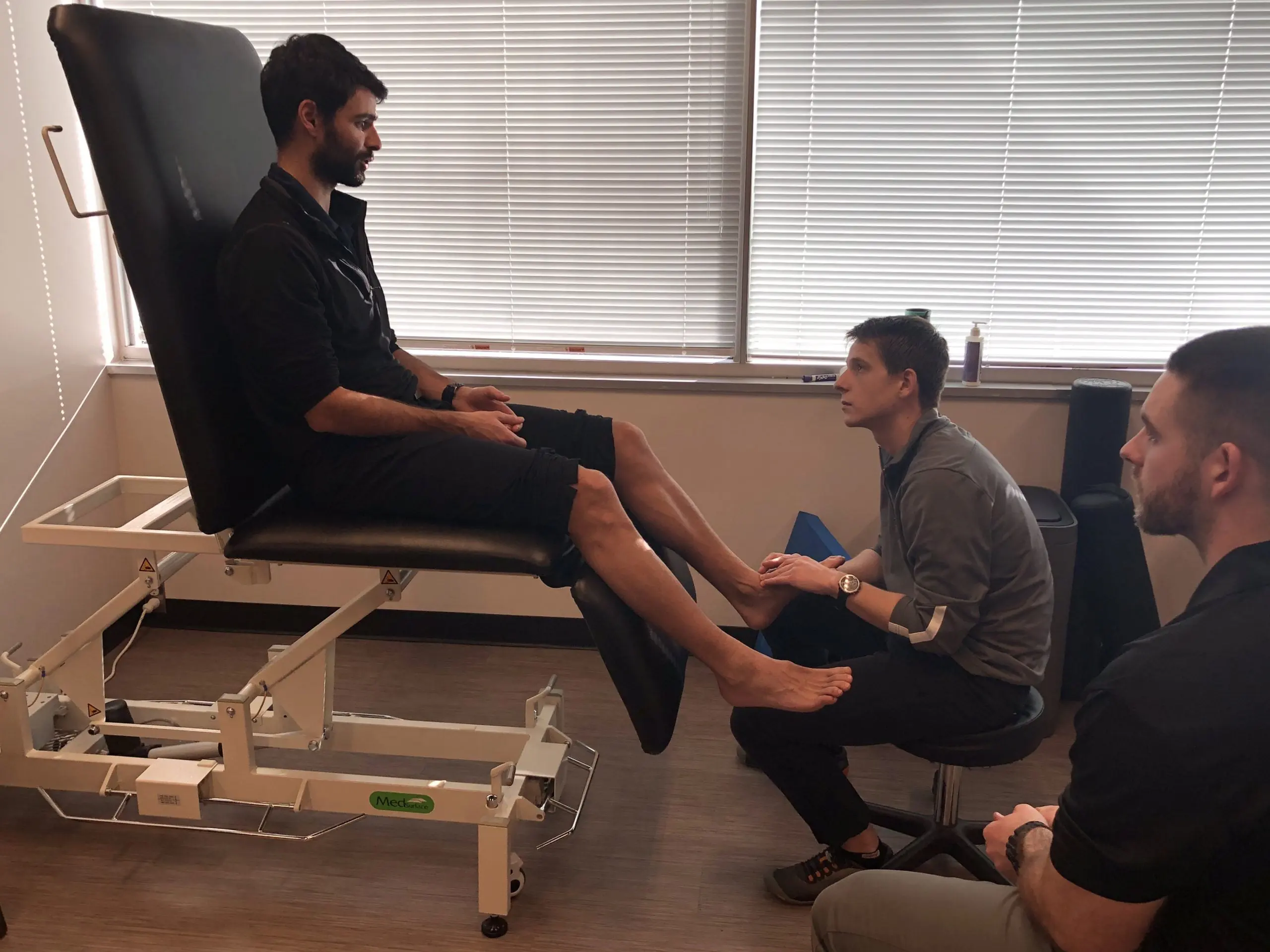Ankle sprains are often dismissed as minor injuries, yet they frequently lead runners and other athletes to seek physical therapy.
The seriousness of these injuries is frequently underestimated, with athletes returning to their activities too soon.
The most common type of ankle sprain that we see in physical therapy is an inversion sprain, where the foot typically remains planted as the ankle turns inward, causing the outer edge of the foot to roll onto the ground—hence the term “rolled ankle.” This motion damages the ligaments on the outside of the ankle, often leading to varying degrees of tears.
The severity of the injury and the number of ligaments affected determine the grade of the sprain, ranging from grade 1 to grade 3.
After an ankle sprain, it’s crucial to rule out a fracture. Athletes should seek an X-ray if they are unable to bear weight on the injured leg or experience severe pain around the malleolus (the prominent ankle bone on the outside).
If no fracture is found and the aforementioned symptoms are absent, the focus can shift to gradually returning to running.
During running, there is never a moment when both feet are on the ground simultaneously. This means the body is continuously bouncing from one leg to the other, placing repeated stress on the ankles as they absorb the full impact of the body.
Unfortunately, after an ankle injury, the capacity of the affected area to handle stress (the cumulative amount it can bear before re-injury) is significantly reduced. As a result, recovery from an ankle sprain often takes longer than expected, with many athletes attempting to run before their ankle has fully healed.
To ensure a safe recovery, injured tissues need to gradually reacclimate to the stress associated with running or other sports.
A careful and progressive return to running might start with non-weight-bearing movements, gradually advancing to low-impact, weight-bearing exercises such as squats, split squats, and lunges. From there, single-leg activities like balance drills and single-leg squats can be introduced, followed by plyometric exercises involving two-legged jumps, and eventually, hopping on one leg.
Finally, activities such as jump roping, short runs, and longer runs can be reintroduced into the routine.
In summary, every ankle sprain is unique, making it essential to have a trained medical professional assess the injury to rule out a fracture. This professional can then design a personalized return-to-sport program tailored to your needs.
For further assistance and information on how we can help, you know where to find us!
